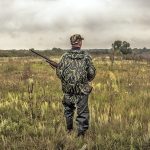Retailers in the active sports lifestyle market posted strong sales growth for the fiscal second quarter, as sales grew 9.0% on a consolidated basis for the public company retailers tracked by Sports Executive Weekly. That high-single-digit sales increase was slightly behind the growth posted by industry vendors (see SEW_0837). Keeping a tight lid on inventory growth helped to boost both margins and net income for retailers to levels of growth that far outpaced the vendor side.
Foot Locker, Inc.s swing to a net profit of $18.0 million after a net loss of $18.0 million in Q2 last year had the greatest impact.
Second quarter results shown in the chart on pages 5 are posted for those companies that have reported for the period ended closest to the end of July. However, because the report is not a clear picture of the entire industry, SEW believes the total absolute numbers are less significant than the trending information provided in ratios and the percentage variances.
Second quarter results shown in the chart on pages 5 are posted for those companies that have reported for the period ended closest to the end of July. However, because the report is not a clear picture of the entire industry, SEW believes the total absolute numbers are less significant than the trending information provided in ratios and the percentage variances.
The quarter was fairly straight forward in terms of one-time charges, acquisition gains or recently-turned-public companies, with the exception of Collective Brands merging the results of Payless ShoeSource and The Stride Rite Group. Focusing on just Payless results for that company, overall retailer sales would have grown only 6.1%. The only other acquisition-based gain in the results was Gander Mountain adding $39.7 million from its acquisition of Overtons, which boosted overall results by a half of a percentage point.
Unfortunately, much of the sales growth did not come from comp stores. In all, only 10 of the 27 retailers covered in the chart reported same-store sales growth for the second quarter. Even more grim was the fact that only Hibbett Sports posted comps growth in the sporting goods channel.
Nonetheless, overall gross margins improved approximately 90 basis points to 33.5% of net sales led largely by the growth at Foot Locker. FL benefited from more full price sales and tighter inventory controls, especially compared to a year-ago period that saw heavy liquidation.
Consolidated return-on-sales held steady for the second quarter at 1.8% as net income grew 8.5% compared to the 9% growth on the top line for industry retailers. That growth level far outpaced the flat result reported by industry vendors.
Finally, inventories grew only 5.2% on a consolidated basis, a sign that retailers have held to their promises to scrutinize inventory growth and maximize every dollar. Only full-line sporting goods retailers saw inventories grow at a higher rate than sales, due largely to Dicks Sporting Goods, even though that retailers inventory was down 2% per square foot at quarter-end.
Looking at trade channels, Family Footwear and Internet/catalog both paced sales, but at the expense of the bottom line. Meanwhile, Specialty did very well on the bottom line, again led by Foot Locker, but nonetheless posting a large profit after a loss last year. Full line did generally poor for the quarter. Profits slid as comps were negative for every retailer in the channel except for Hibbett Sports.
Overall, the second quarter has to be considered a success for the market. Sales were up, even with the bottom line, while many other industries suffered.















